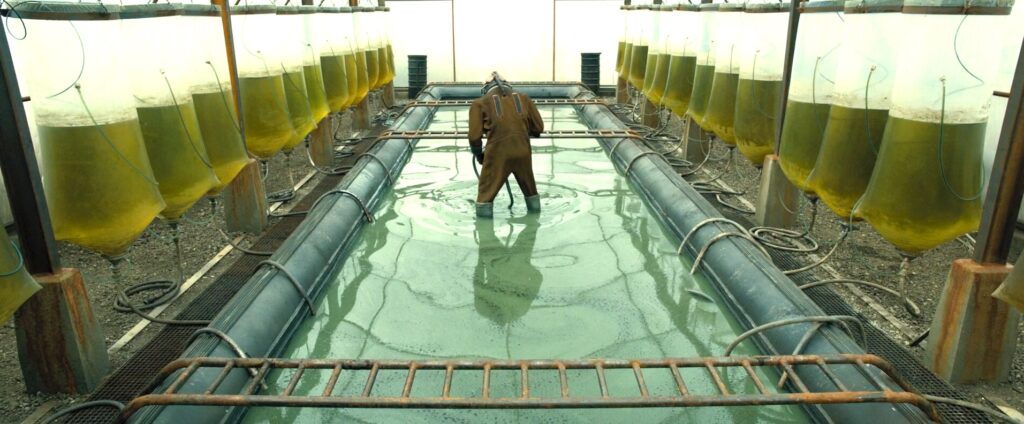At the beginning of Blade Runner 2049, a “replicant” or android named “K”, an employee of the LAPD, arrives at a protein farm. This is run by another replicant named Sapper Morton, but Sapper is unregistered; a runaway that must be taken out of commission. In Sapper’s brown kitchen, among bowls of grubs, K and Sapper fight briefly until K receives the upper hand and kills Sapper. K takes his flying car back to an LA kept dry by enormous walls that prevent the ocean from flooding the city.
Among many other things, Blade Runner 2049 is a film that speculates on how people in North America will eat in a future drastically transformed by climate change. The sequel to Ridley Scott’s breathtaking (bit at times uncomfortably misogynist) Blade Runner from 1982, it envisions a dystopian world where the soil of the planet cannot yield plants any longer (a kind of nightmare version of what Hannah Hollman writes about in her excellent book Dust Bowls of Empire. As a consequence, the rich are escaping to the stars or hiding in gated communities, this while food, animals and even people are manufactured in farms such as the one Sapper operated, or in labs. In a future where humans are escaping and where the land lies dead, there is an insatiable demand for the artificial.
There is so much to say about this magnificent science fiction film, but, from a food perspective, the most interesting scene takes place after K has come home to his dreary apartment. As soon as he enters, he begins conversing with a young woman outside the camera’s view. She tells him how she has been fussing with dinner, yet the audience sees K making a simple meal at the stove; a bowl of something that looks like gray, thick, semitransparent noodles, perhaps derived from the grubs manufactured in protein farms. He takes the bowl to the living room and as he sits down to eat, we see the young woman take shape. She is an AI that takes visual form with the help of a holographic projector in the ceiling of the room. She walks confidently towards him with a plate of (holographic) food in her hand. She puts the plate on top of the bowl of indistinct food K has cooked for himself. It is a beef, a bowl of French Fries and green lettuce.
This is food that no longer exists. It is also, as the EAT-Lancet commission has asserted, the kind of meat-heavy diet that is helping to erode the planet at the present moment. Yet, what this passage of the film says most clearly about the present and the future is how enormously difficult it is to imagine types of food and eating beyond the types that exist today. It is not until the plate of (ancient, unsustainable) food is projected over the bowl of grey noodles that this bowl becomes food. Until this moment, it is merely “feed”, devoid of actual cultural content.
This identifies the main challenge of what the EAT-Lancet Commission calls the “great food transition”. To shift our diets, it is necessary to rethink not simply what types of food we (in the Global North) eat and promote across the world, but what this food means. Why is there a need in Blade Runner 2049 to project a steak and French fries over the bowl of protein noodles for it to become appetizing? What kind of work is needed to shift that perception?

